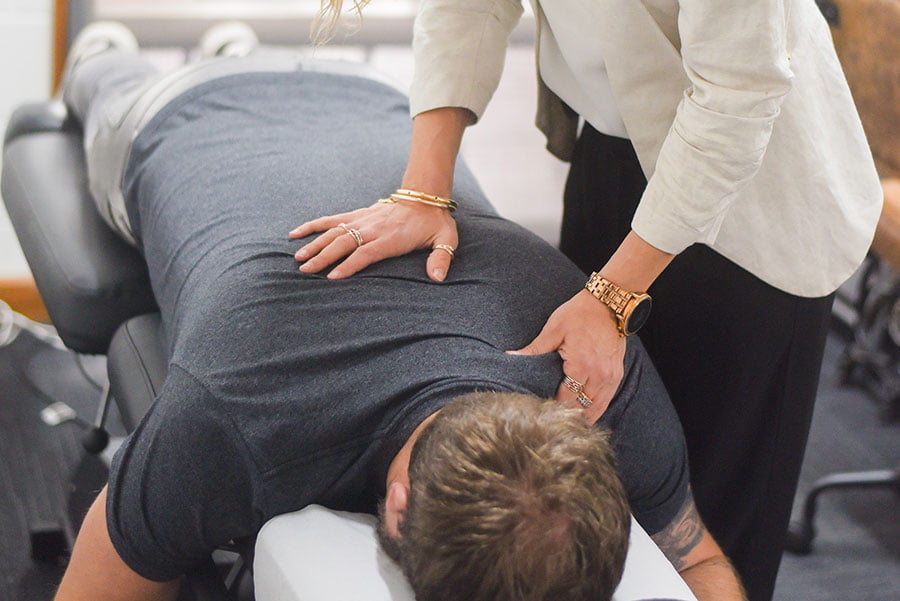Migraines
There are two common types of migraine headaches. One has an aura associated, the other does not. The aura is often described as zig zag lines or spots in the vision prior to the pain of the headache beginning. Other warning signs include thirst, cravings, feeling tired or depression leading up to the migraine.
Migraines are vascular headaches. The aura occurs during the vasoconstriction phase (where the blood vessels become smaller so less blood can flow through). After this phase the blood vessels dilate. This increases the blood flow to the tissues and causes the strong throbbing headache.
Migraines are often described as throbbing and frequently, but not always, begin on one side of the head. They can last anywhere from 4 to 72 hours and are relieved by resting in a dark room. Some people have other associated symptoms such as
- Nausea and vomiting
- Dizziness
- Fatigue
- Visual disturbance
- Numbness in parts of the body
- Sensitivity to light and sound

Treatment:
There are many things which can help decrease the frequency and severity of migraine headaches. They include:
- Avoiding Triggers: Often people who suffer migraines know of triggers such as chocolate, oranges, MSG or dairy.
- Exercising regularly
- Reducing stress
- Supplementing the diet with: Magnesium[i], Coenzyme Q10[ii] [iii]and/or Vit B2[iv] (check with your pharmacist if any of these supplements will interfere with your medication)
Chiropractic:
Many studies have looked at how effective chiropractic treatment is with treating migraines. One study revealed 22% of people receiving chiropractic care had a 90% reduction in migraines. As well as 49% reduction in intensity of migraine when they did have an attack.[v] Another group of researchers reviewed the efficacy of chiropractic treatment across 9 separate studies. They found that chiropractic treatment was as effective as medications in prevention of migraines and tension headaches.[vi]
[i] Trauninger A, Pfund Z, Koszegi T, Czopf J. Oral magnesium load test in patients with migraine. Headache. 2002;42(2):114-119
[ii] Rozen TD, Oshinsky ML, Gebeline CA, et al. Open label trial of coenzyme Q10 as a migraine preventive. Cephalalgia. 2002;22:137-41.
[iii] Sandor PS, Di Clemente L, Coppola G, et al. Efficacy of coenzyme Q10 in migraine prophylaxis: A randomized controlled trial. Neurology. 2005;64:713-5.
[iv] Boehnke C, Reuter U, Flach U, et al. High-dose riboflavin treatment is efficacious in migraine prophylaxis: an open study in a tertiary care centre. Eur J Neurol. 2004;11:475-7.
[v] Tuchin PJ, Pollard H, Bonello R. A randomized controlled trial of spinal manipulative therapy for migraine. J Manipulative Physiol Ther. 2000;23(2):91-95.
[vi] Astin JA., Ernst E. The effectiveness of spinal manipulation for the treatment of headache disorders: a systematic review of randomized clinical trials. Cephalagia. 2002;22(8):617-623.
Other References:
Bronfort G, Assendelft WJ, Evans R, Haas M, Bouter L. Efficacy of spinal manipulation for chronic headache: a systematic review. J Manipulative Physiol Ther. 2001;24(7):457-466.
Dagenais S. Haldeman S. Chiropractic. Prim Care. 2002;29(2):419-437.
Mauskop A. Alternative therapies in headache. Is there a role? [Review] Med Clin North Am. 2001;85(4):1077-1084.
Check Out What Our Patients Say About Our Adelaide Chiropractors
Click the link to read more of our Google Reviews.
Yes, there are a few things you may be able to do to decrease the occurrence of migraine headaches. These include:
- Avoid triggers
- Increase magnesium in your diet
- See your chiropractor
- Have a massage
- Try dry needling
- Try ginger for nausea relief
- Manage your sleep
Tension headaches are more common than migraines and usually will disappear within a few hours. Migraines on the other hand, often are more severe and last between 4 and 72 hours.
Tension headaches are often felt on both sides of the head and can feel like a tight pressure
. The pain is commonly around the temples and can also be associated with neck and shoulder tightness. Migraines on the other hand, are usually a throbbing pain that is located around the eyes or temples. The migraine pain often gets worse with increased physical activity while laying down or sleeping will commonly relieve some of the pain.
Migraines may also be associated with or without aura, flashing lights, or dots in the eyes. Other migraine symptoms include nausea, vomiting, sensitivity to light and/or sound, and tingling in the arm or face. Tension headaches do not have these additional symptoms.
There is no definite cause for migraine headaches, there are theories, but no real answer. There are, however, some known triggers we know of. These include:
- Foods such as cheese, salty foods, chocolate, and some preservatives
- Skipping meals
- Alcohol
- Bright lights, loud noises, and strong smells
- Hormonal changes, these can often be cyclical
- Medications
- Stress
- Extreme exercise
- Poor sleep
